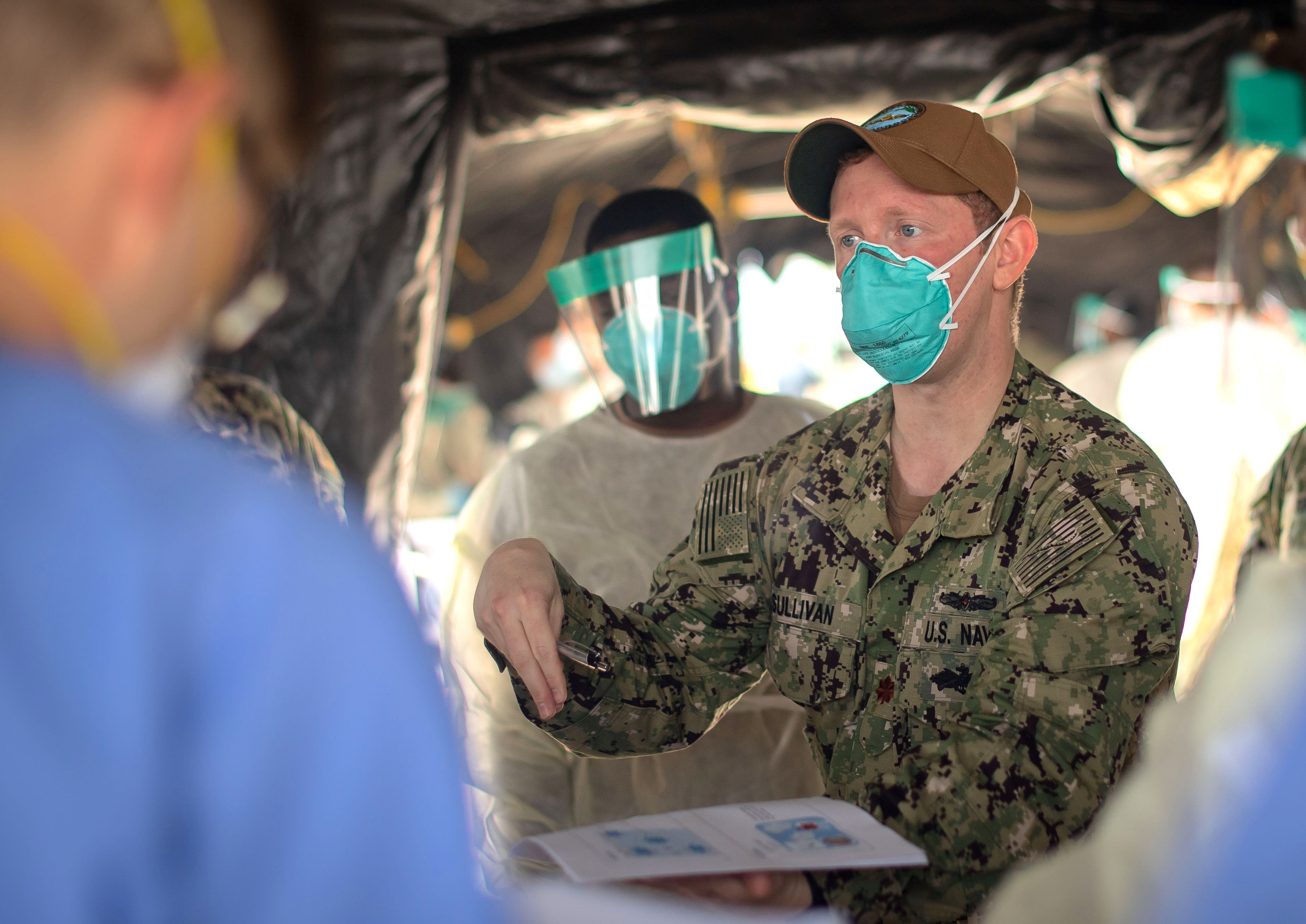
When COVID-19 was first detected on guided-missile destroyer USS Kidd (DDG-100) late last month, the Navy put into action a new set of procedures to stem the spread of the virus.
The crew had departed Hawaii in late March after being detached from the Theodore Roosevelt Carrier Strike Group while USS Theodore Roosevelt (CVN-71) was grappling with its own virus outbreak that left aircraft carrier pier-side in Guam.
Almost a month later, the first signs of an outbreak appeared when the destroyer was operating off the Pacific coast of South America. The crew hadn’t left the ship since their Hawaii port call, about a month prior to when the first sailor showed symptoms of an “influenza-like illness” or ILI on April 22. That day, the sailor was evacuated off the ship to a military hospital in San Antonio, Texas, and on April 23 the sailor tested positive for COVID-19. That positive test started a process the Navy has cobbled together over the last two months to purge the virus from deployed ships.
Pretty quickly into the U.S. spread of the pandemic, the Navy realized that the only real way to keep the virus off hulls and keep sailors healthy was to craft and maintain a fragile, virus-free bubble on their warships, Vice Adm. Richard Brown, the commander of Naval Surface Forces and Naval Surface Force Pacific, told USNI News in an interview on Friday.
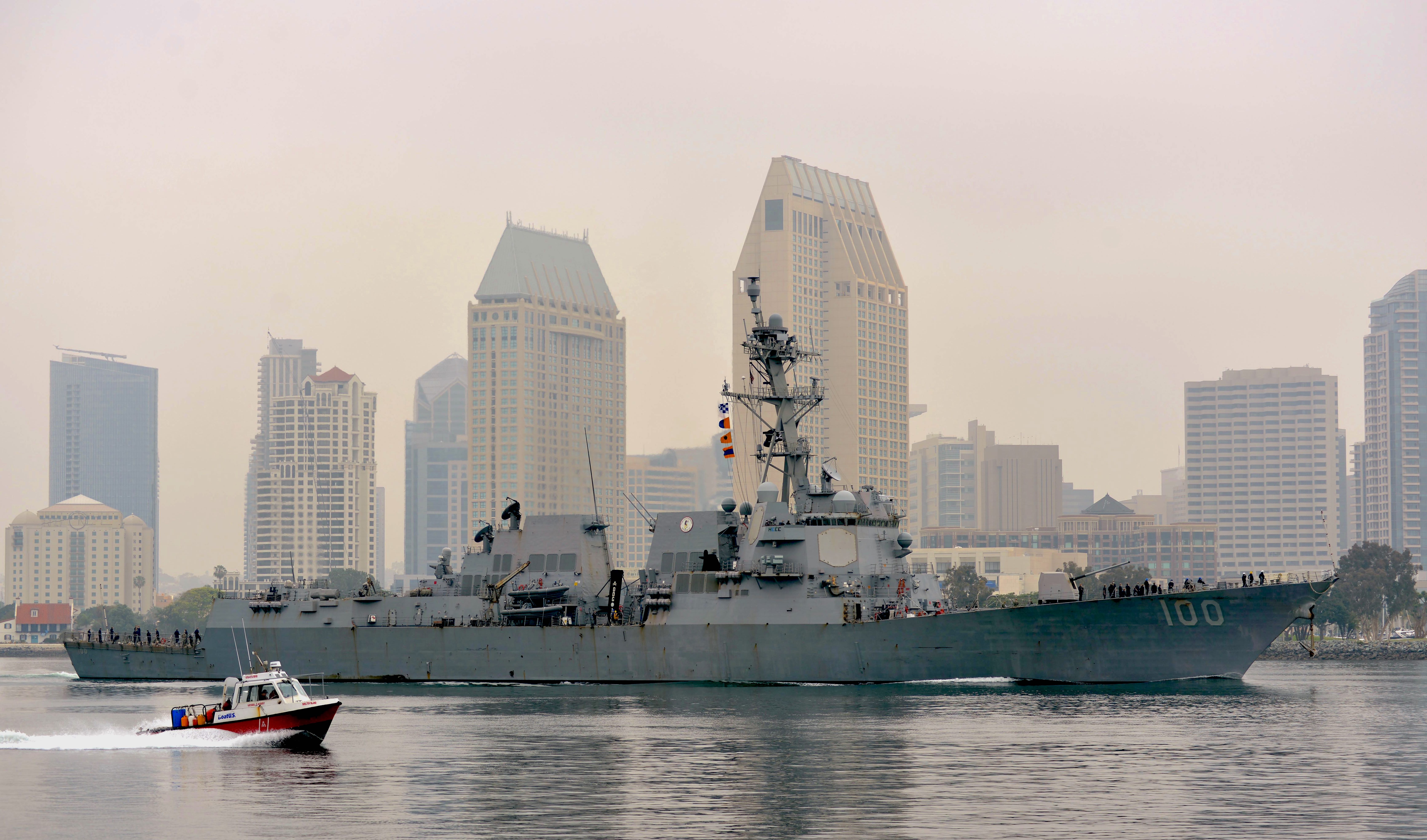
“When we started out this process, I started to say it was an algebra problem for us,” he said.
“Then it became differential equations, and then it went to multivariable calculus, and in many respects now it’s almost theoretical physics trying to figure out what is the right thing to do.”
For destroyers like Kidd, sailors are packed into tight crew quarters, and social distancing is an impossibility. Navy leadership has consistently updated procedures on the ship to slow the spread.
“The things you should do in your galley, like there’s no self-serve anymore. There are no community-use condiments, like the ketchup bottle. You get individual ketchup packages. It’s all these little micro things you need to think about that you can provide guidance for in a general format that each individual commander can then apply,” he said.
“When the Kidd got underway from Hawaii, they got our first email and they started the cleaning and the disinfecting and the social distancing as much as you can do on a destroyer. They stopped serving self-serve on the mess decks, they closed down their gyms and the classrooms.”
However, the guts of a guided-missile destroyer are tailor-made to spread COVID-19. Narrow passageways, group heads and dozens of sailors crammed into three-bunk-high berthing spaces that would never pass a civilian fire marshal’s occupancy and safety inspections can quickly cause the virus to spread throughout a destroyer.
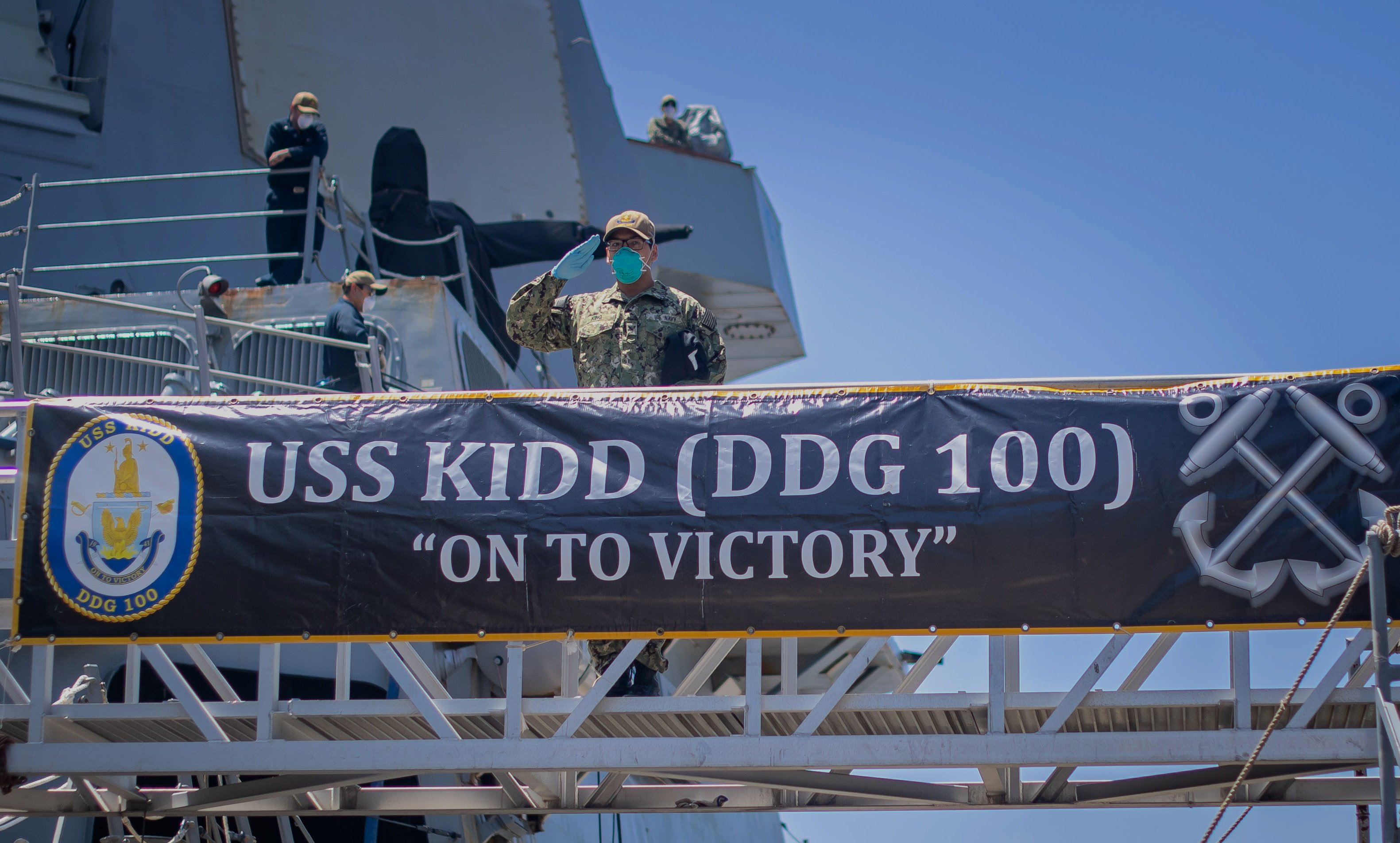
“If it gets on, it’s on the ship. And you can slow and arrest the spread, but at some point, you start losing the battle, and that’s when you have to take more urgent and decisive action, and that’s what we did with Kidd,” he said.
“If we had left her out there, I would say at some point the entire crew would have been infected in a number of weeks.”
Once the virus was discovered aboard Kidd, operational commanders weighed the need for the ship to continue its mission versus the long-term health of the ship and the crew. In this instance, once the positive case was detected, U.S. 4th Fleet, U.S. 3rd Fleet and U.S. Southern Command agreed to pull Kidd from its counter-narcotics mission and send it back to shore to begin the process of isolating the crew and disinfecting the ship.
“We have an enormous respect for this virus. It’s insidious, and the reason why its insidious is the asymptomatic spread,” Brown said.
“On a DDG, where you’re really packed in, there can be asymptomatic spread that can go on for a while before your first sailor shows up that’s displaying any symptoms. It’s just a really hard problem to get after.”
The problem gets easier with non-deployed ships. Brown said that, as of Friday, he had nine ships in port that had sailors infected with the virus, most in the single digits. Care for those sailors and disinfecting the ships is easier due to the proximity to shore.
For example, the yet-to-be-commissioned amphibious assault ship Tripoli (LHA-7) had an outbreak when the ship was pier side doing its final upfit in Mississippi in mid-March, Brown said. The Navy decided to clear the ship of its 630 sailors after only a few sailors tested positive. In the end, only about two dozen sailors tested positive for the virus without creating major headaches for the ship’s entrance into the fleet. When an outbreak on USS Coronado (LCS-4) occurred in March, the Navy tested the entire crew after the first case emerged and was able to stop a wider spread.
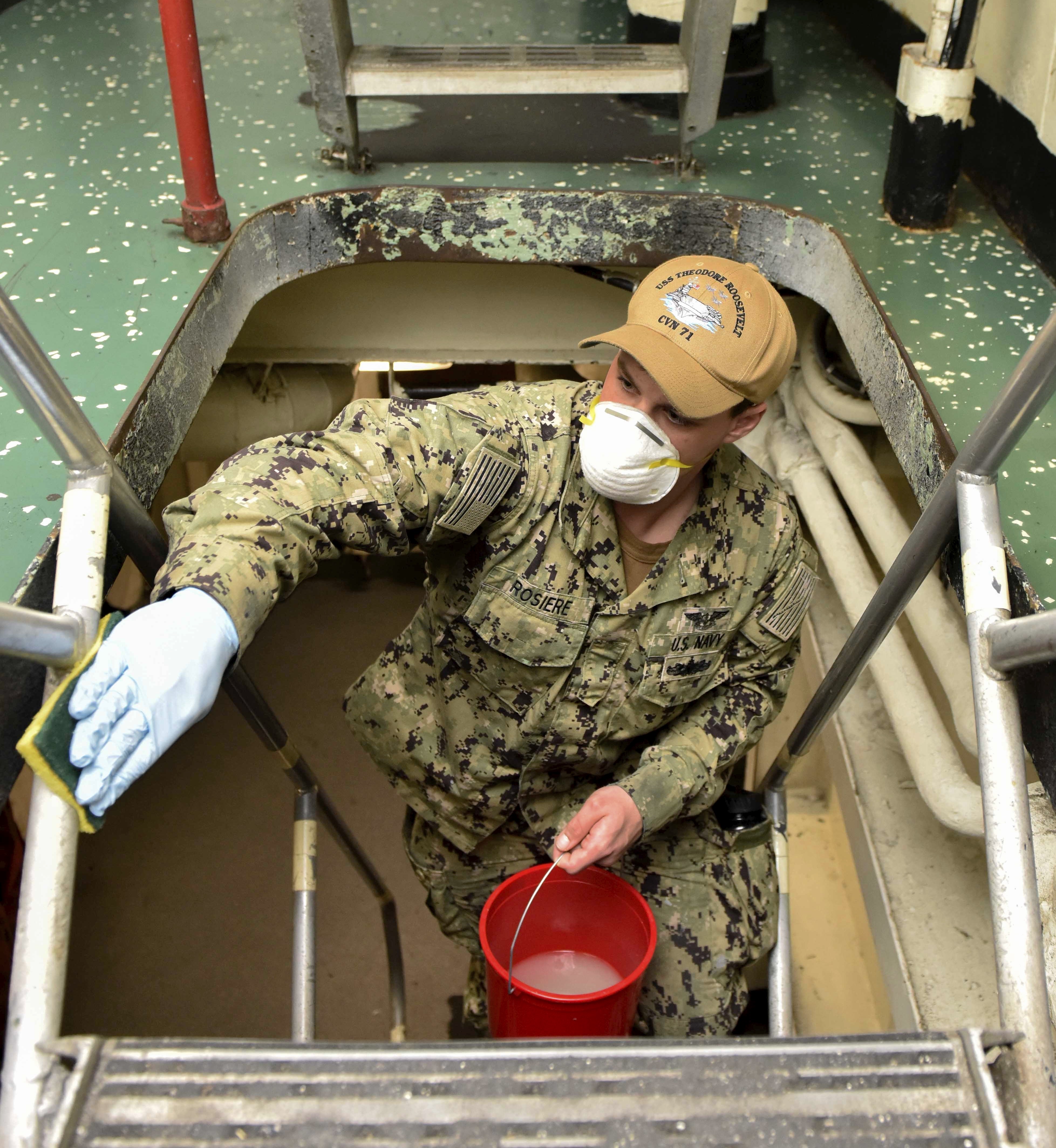
For Brown and the rest of the Navy, the challenge becomes harder for deployed ships. The operational commanders have to weight the health of the crew with the need to complete the assigned mission. The Navy is keen to keep the numbers of infected ships as low as possible, given the service is still unsure how the virus got on Kidd and Theodore Roosevelt.
Two big tests of the Navy’s methodology are in the works now. This week, USS Ronald Reagan (CVN-76) left its pier in Japan for sea trials ahead of its upcoming spring patrol. In San Diego, carrier USS Nimitz (CVN-68) is gathering its strike group and air wing for a round of exercises ahead of a deployment later this year.
Both strike groups have instituted their own bubble procedures based on not only the lessons of Kidd and Theodore Roosevelt.
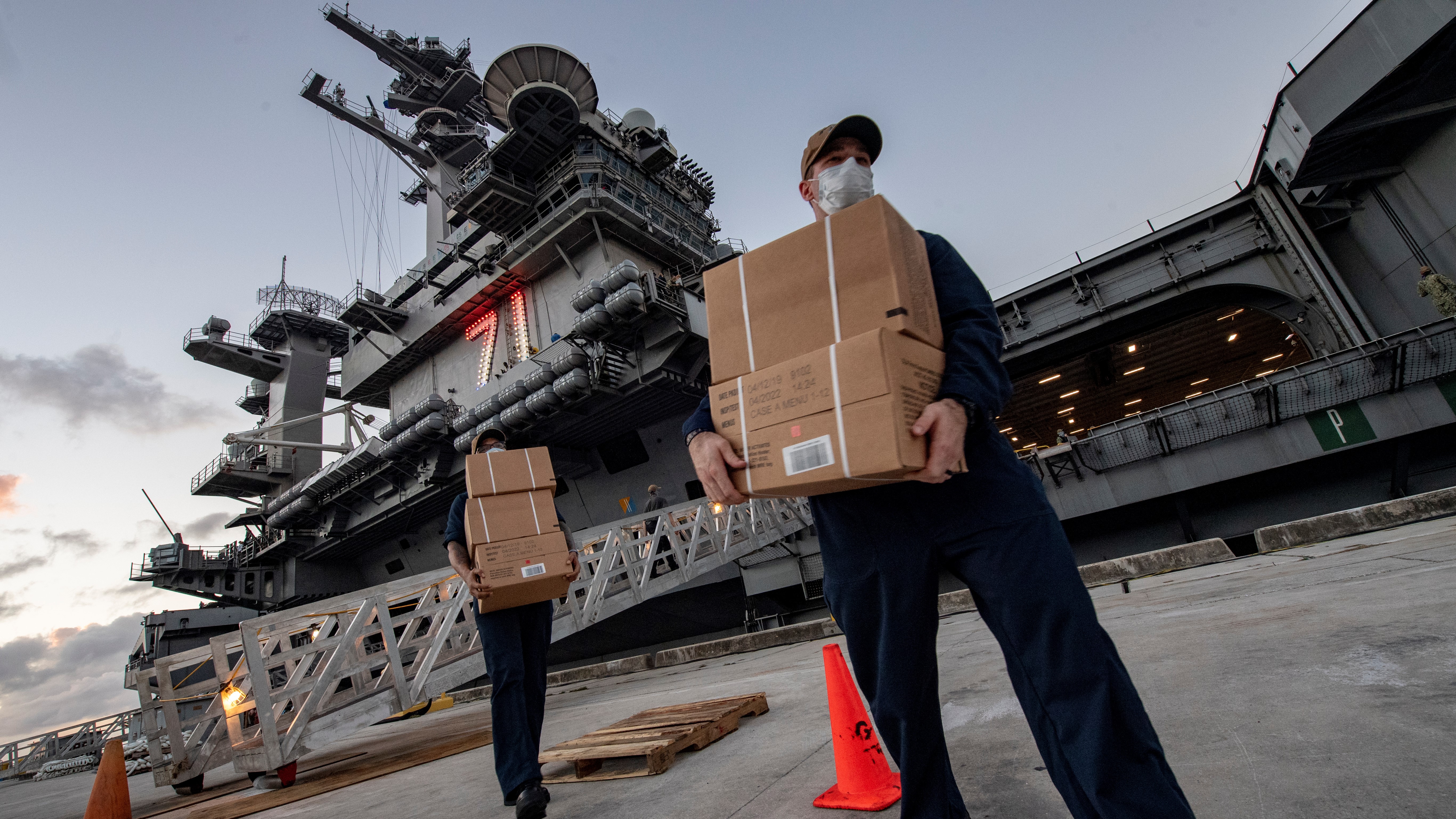
From the study of outbreaks on Kidd and Theodore Roosevelt, the Navy has crafted new guidelines and testing procedures, Vice Adm. Phillip Sawyer, deputy chief of naval operations for operations, plans and strategy (OPNAV N3/N5), and Navy Surgeon General Rear Adm. Bruce Gillingham told reporters on Wednesday.
The Navy has expanded on the Centers for Disease Control and Prevention guidelines from their experience with the Theodore Roosevelt outbreak to create stricter rules for the service.
“On TR, we expanded the CDC guidelines to wait until 14 days after the onset of symptoms and required two consecutive negative tests before we would clear that person to return to duty,” Sawyer said.
That comes on top of virtually eliminating port visits and keeping sailors aboard the ship from training into their deployment.
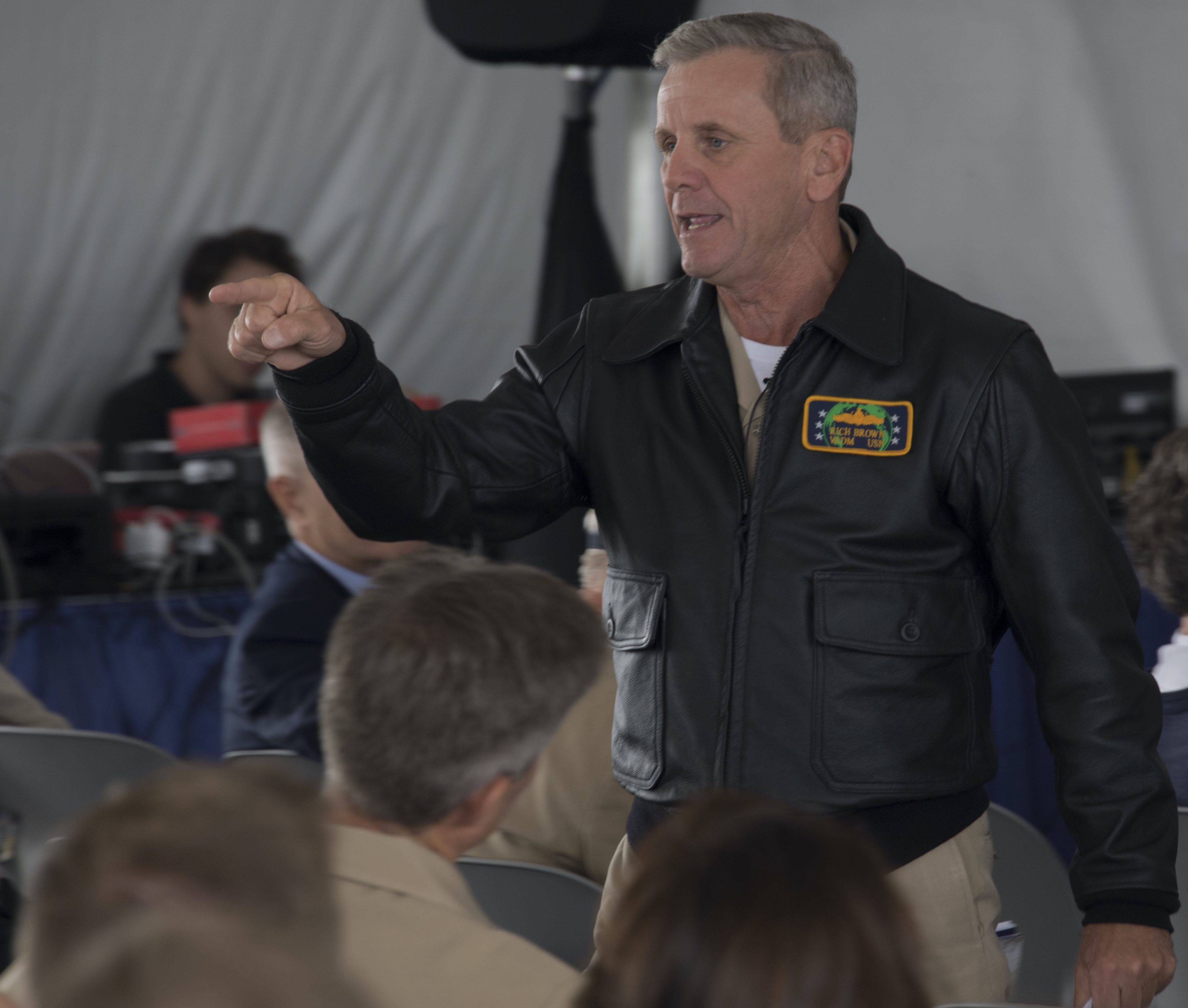
The Navy is also employing more portable testing machines like BioFire and Abbott’s machines to quickly screen for COVID-19-like infections to assist in quickly diagnosing potential problems.
“We’re using the newest gear the nation is producing. We’re using portable gear out on our ships, and we have actually gone more conservative than the CDC guidelines,” Sawyer said.
One major change for the carriers will be new restrictions on the C-2A Greyhound carrier onboard delivery detachments assigned to the ship. COD detachments, typically based onshore at major airports as the carrier moves around the world, bring aboard mail, supplies and visitors in a steady hum aboard the carriers.
While the source of the infection for Theodore Roosevelt is still inconclusive, the COD flights are a suspected vector for bringing the virus aboard the ship. Sawyer said lessons from the COD detachment assigned to Harry S. Truman’s deployment in the North Arabian Sea in U.S. 5th Fleet are playing into how carriers will operate in the Pacific.
“If the flight crew detachment is staying ashore for any period of time, they are restricted from movement from plane to wherever they’re staying,” Sawyer said.
“We’re working toward keeping them aboard the ship. So far, far fewer COD flights. We’ve been able to do this very successfully in 5th fleet. They’ve given us a pretty good model to minimize those vectors into the bubble and we’re replicating that across the force.”





